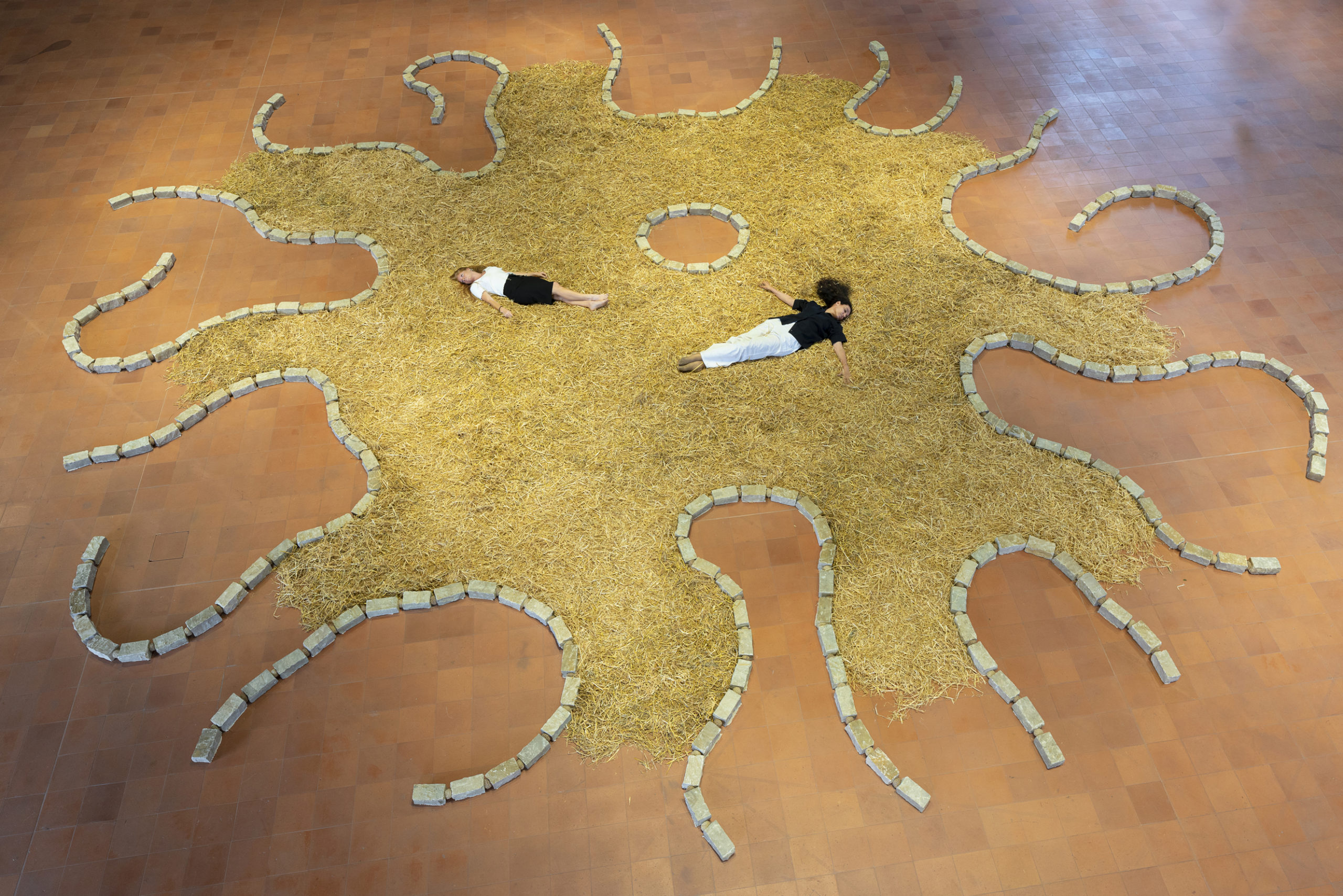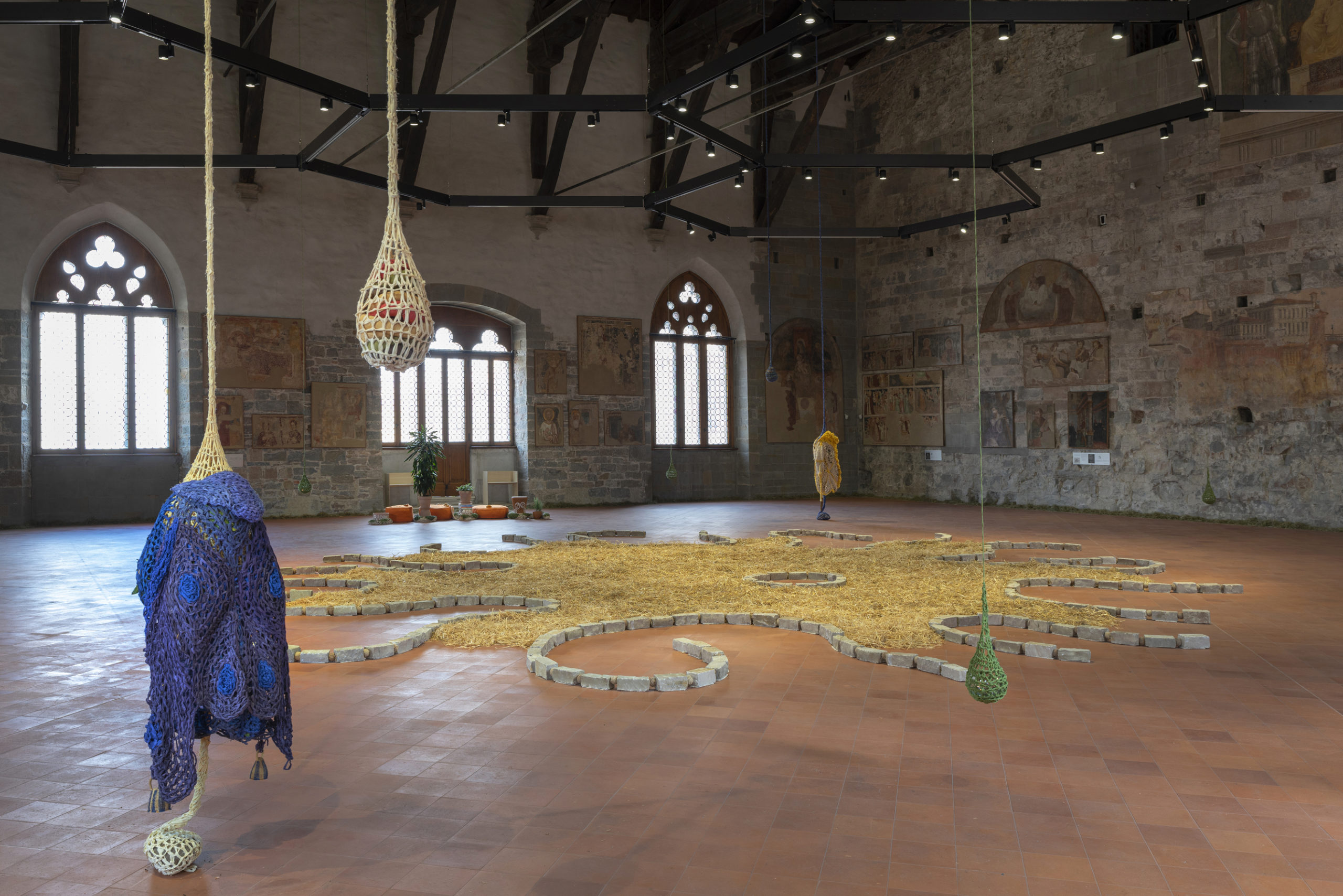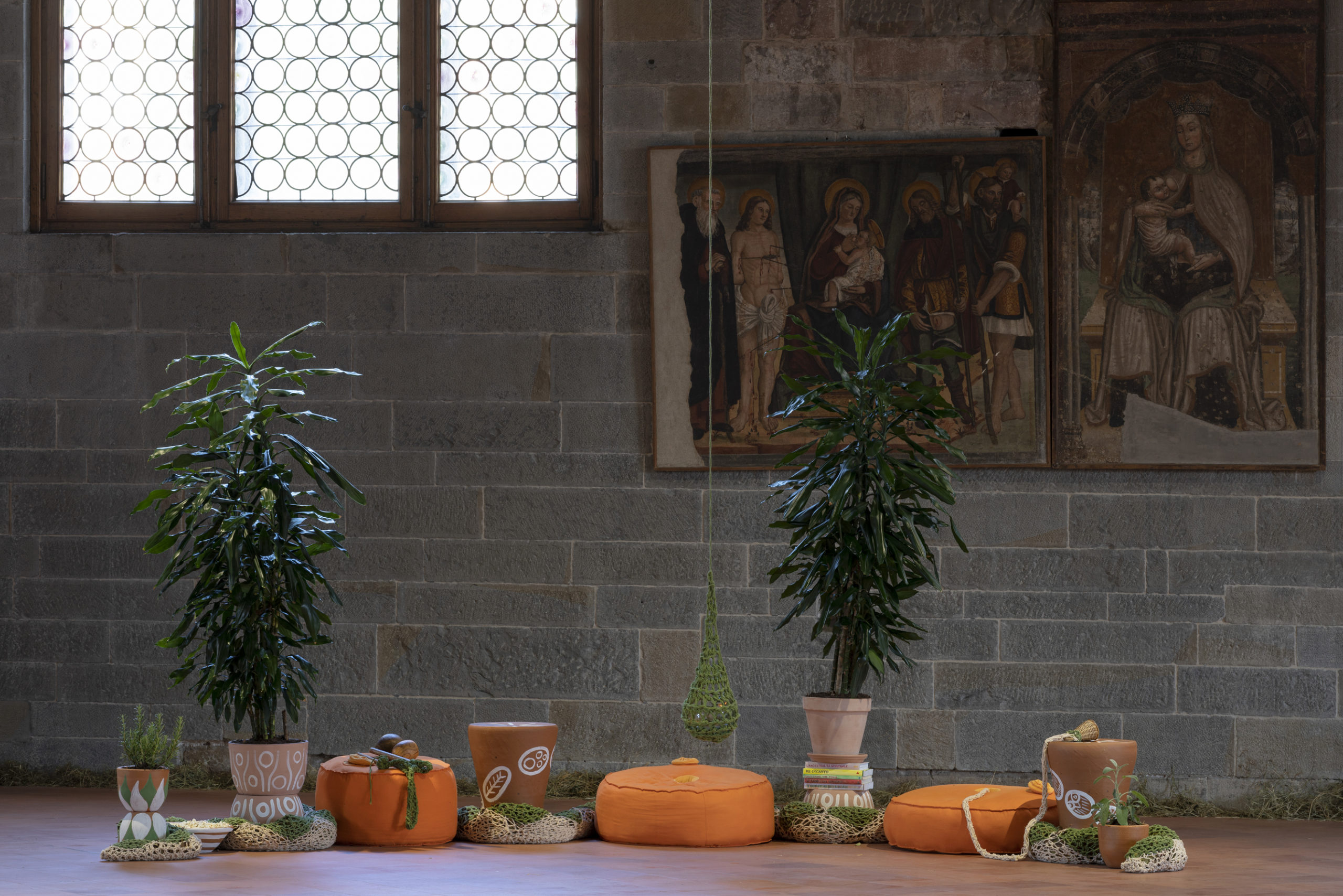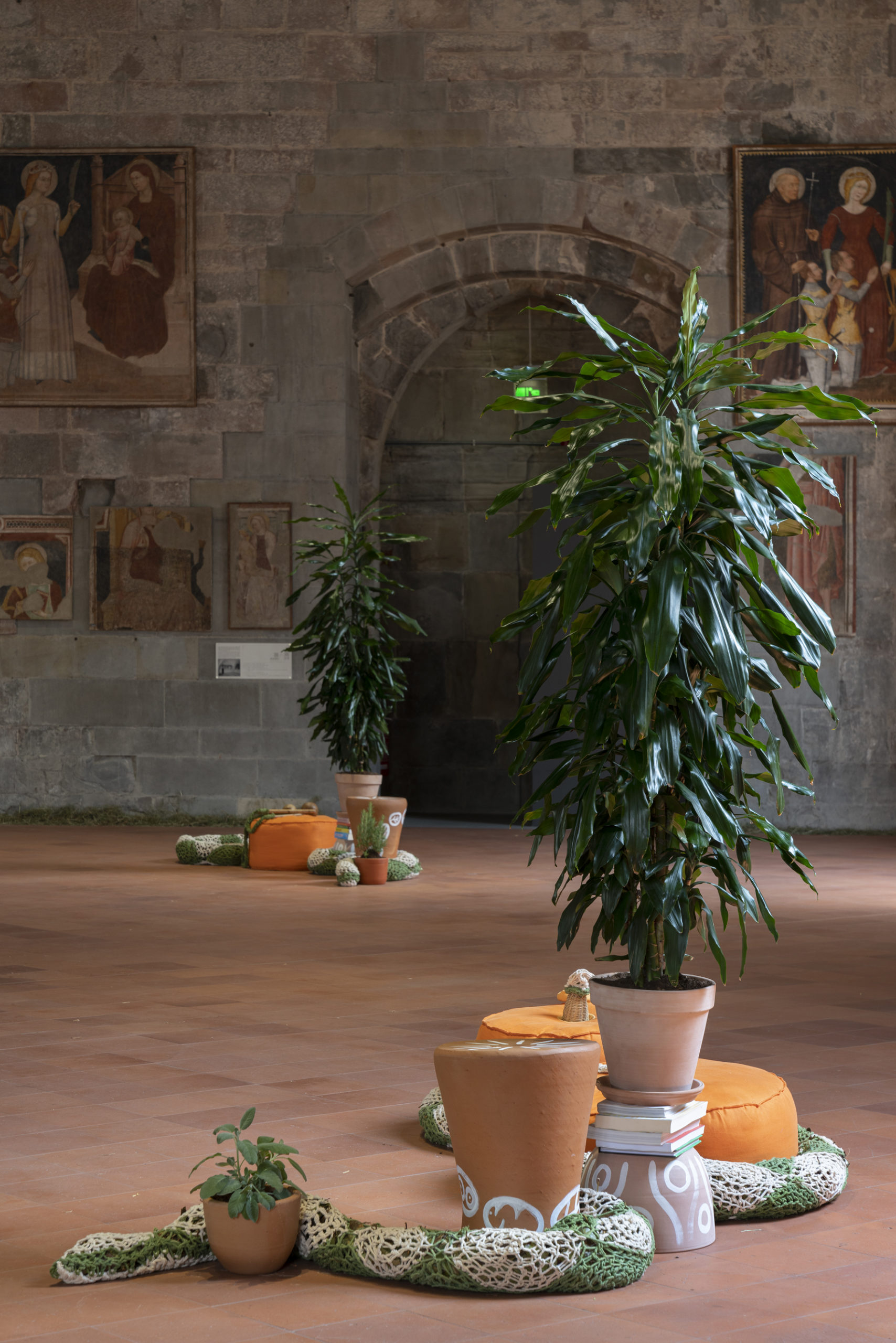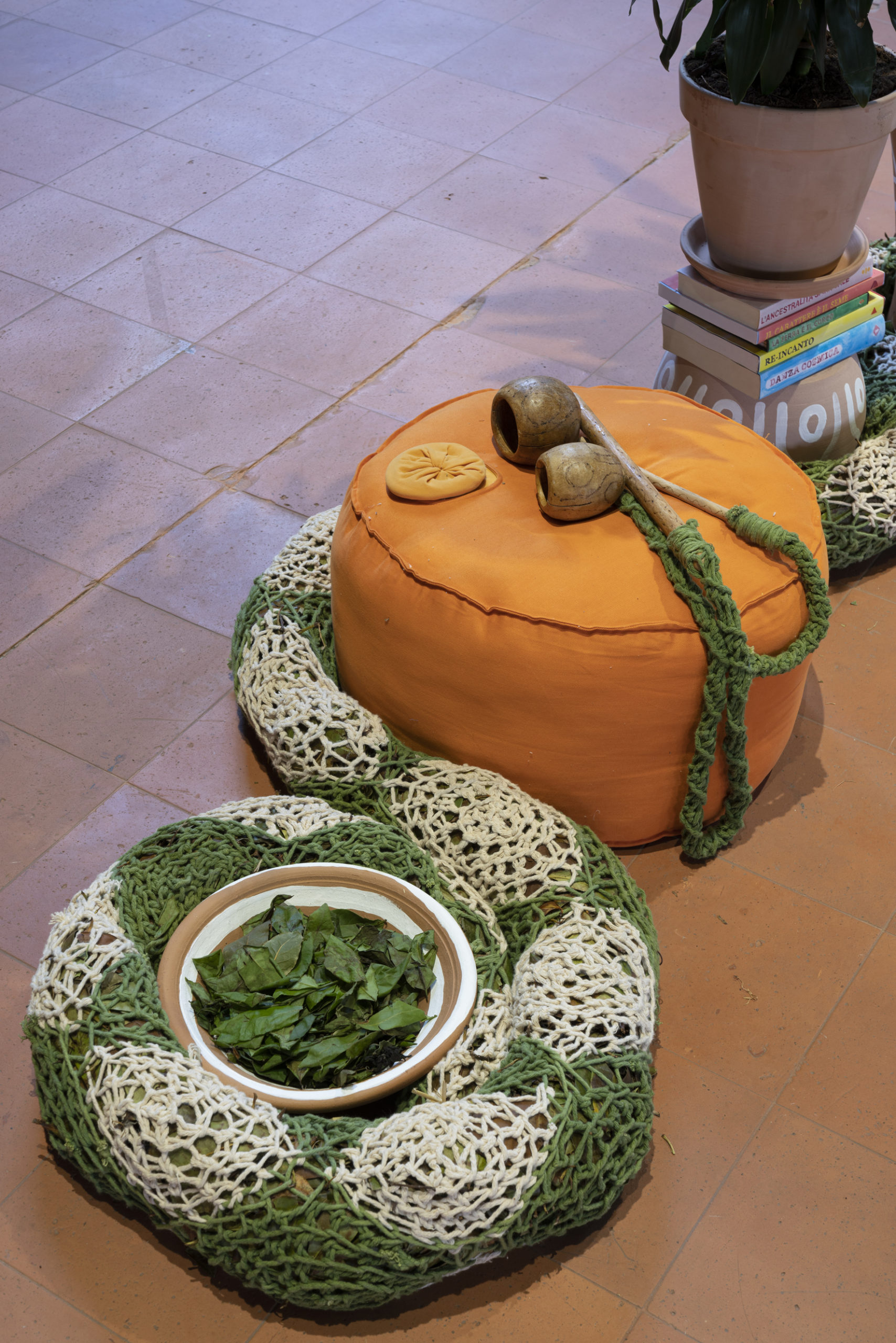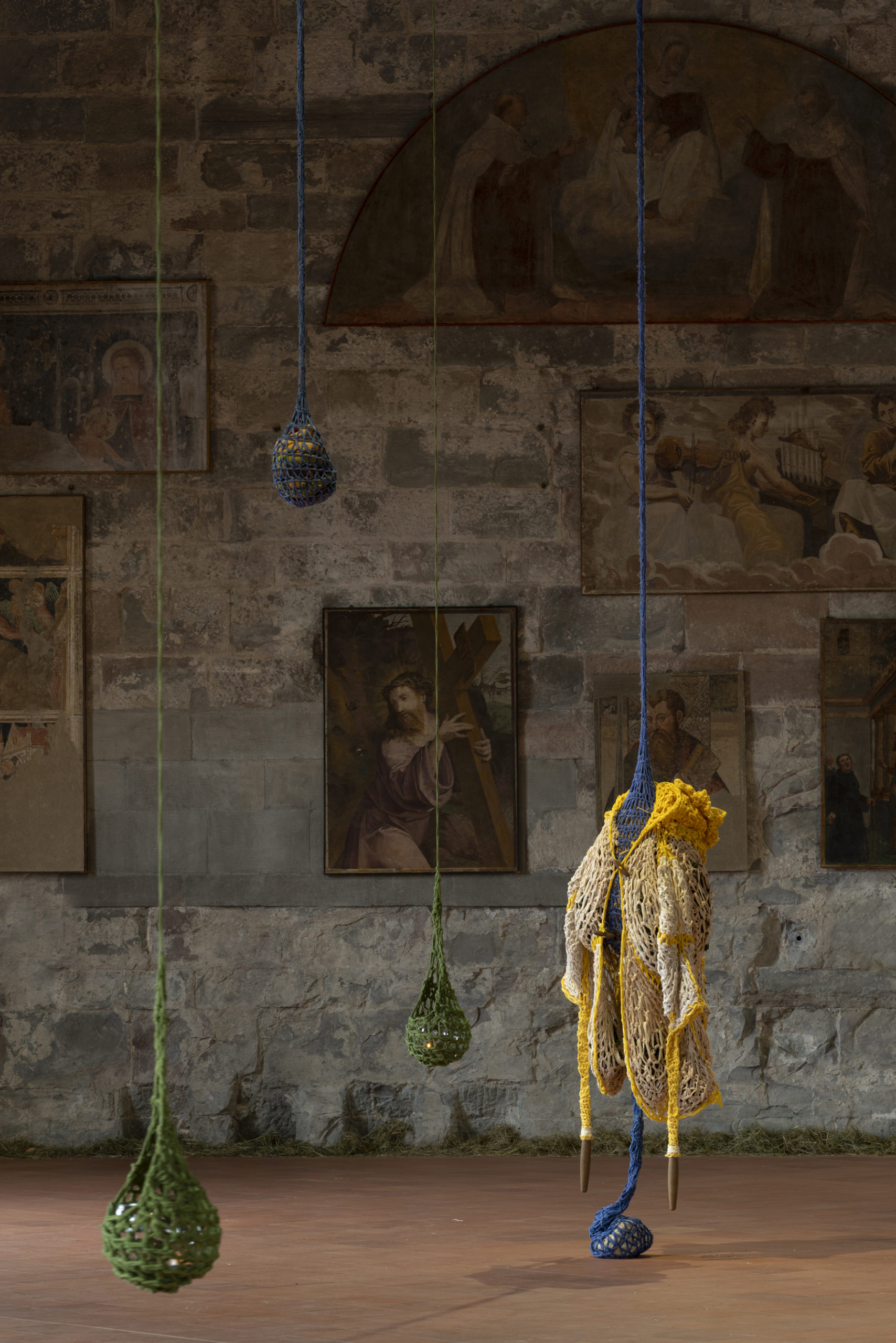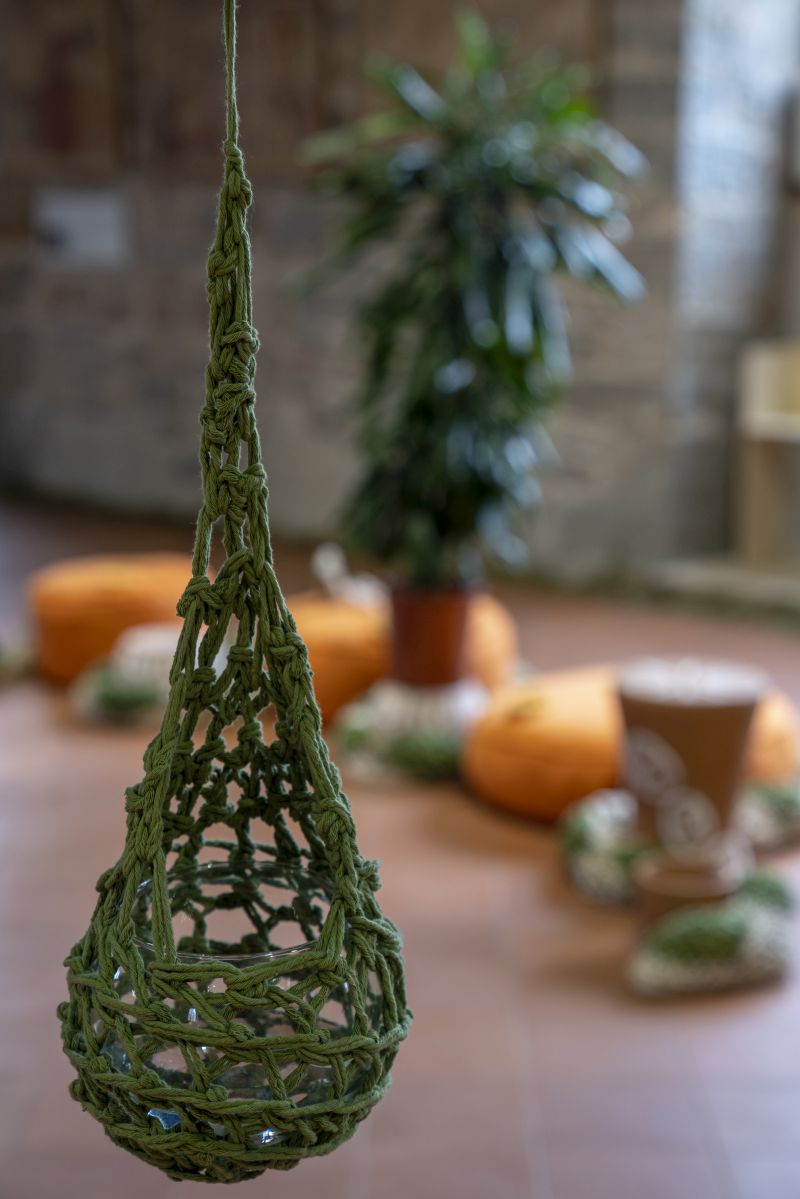Ernesto Neto. Mentre la vita ci respira
Mentre la vita ci respira – SoPolpoVit’EreticoLe is the title of a solo exhibition by the Brazilian artist Ernesto Neto (Rio De Janeiro, 1964) hosted in Bergamo’s Palazzo della Ragione: the first of a new three-year cycle curated by Lorenzo Giusti for the evocative Sala delle Capriate, GAMeC’s summer venue for the fourth year in a row.
Twenty years after the artist’s debut participation at the Venice Biennale (2001), curated by Harald Szeeman, when he was invited by Germano Celant to represent Brazil in the section given over to the national pavilions, Ernesto Neto returns to Italy with a brand new project, a prelude to the exhibition Nothing Is Lost. Art and Matter in Transformation, to be staged at the GAMeC in the autumn of 2021.
Neto’s multisensory installations pervade the space, immersing the visitor in evocative environments in which materials, essences, and forms take on multiple connotations. Everything in Neto’s work contributes to the creation of new universes of meaning, conceived as tools for healing the wounds of contemporary society.
Seen from the other side, the large central installation, entitled SoPolpoVit’EreticoLe, looks like a kind of agroglyph: a drawing with an organic form, a sort of octopus traced on the floor of the large room, the tentacles of which move simultaneously in different directions, also reminiscent of the movement of the boa to be found in many other projects by Neto.
Part octopus, part sun, part cell, the drawing has a circle in the center of the figure that seems to evoke the presence of a navel. The navel is a form of cross-cultural symbolism that projects the analogy between the universe and the body onto the very concept of the center.
Closely bound up in human physiology is the consideration of the navel as the generating hub par excellence. Hence the “life” evoked by the title of the installation, which in fact takes the form of an acrostic created from the initial syllables of the Italian words for “sun”, “octopus,” “life”, and “heretic”, put together following the rhythm of the words so as to transmit a sense of musicality and movement.
Conceived in actual fact as a bed, one of the many natural resting places recreated in the space of Palazzo della Ragione, on which to lie down or sit and share the experience of taking a break, Neto’s work makes use of locally sourced materials, such as stones and straw, plants, spices, and medicinal herbs, placed in handmade bags using the crochet technique, so as to stimulate all of the five senses.
The installation combines an attention to the themes of ecology, rituals and spirituality, characteristic of Neto’s research, with visions and suggestions evoked by comparison with the medieval origins of the palace and its centuries-old history.
It was in fact during the final phase of the so-called Dark Ages that, even in Northern Italy, many free women who lived in close contact with nature—thus spontaneously picking up the legacy of animist and pantheist cultures still thriving in popular society at the time—were accused of witchcraft, persecuted as heretics and burned at the stake.
As recent studies tell us, witches embodied the wild side of nature, everything in it that appeared autonomous, unconditional, out of control, and therefore in contrast with the orderly vision of the world as promoted by official doctrines. It is worth remembering how the etymology of the word “heretic” derives from the Greek word for “choice” without implying any immediate positive or negative connotations. However, this term soon became indicative of a specific choice: that of abandoning a thought until then deemed as valid in order to offer a new interpretation in its place.
Neto’s work therefore invites us to rethink this crucial passage in the history of the West, which affected not only the “Old Continent” but also the lands conquered overseas by European colonizers, where the persecution of women became one of the cruelest means of subjugation and exploitation of indigenous populations.
The artist literally invites us to put on new clothes—indeed also presenting some outfits in the exhibition—that might place us in relationship with the natural world, with the spirits of our ancestors and the non-Western epistemologies to which he is linked.
The installation constitutes a powerful hymn to life, to nature in its most ancestral dimension, as well as an invitation to reconsider the importance of a non-functional, non-anthropocentric vision of the universe, together with the principle of a holistic conception of the world and of the substantial materiality of everything.
Palazzo della Ragione, Bergamo
10.6-26.9.21.
Ph: Lorenzo Palmieri for GAMeCDate
June 11, 2021
